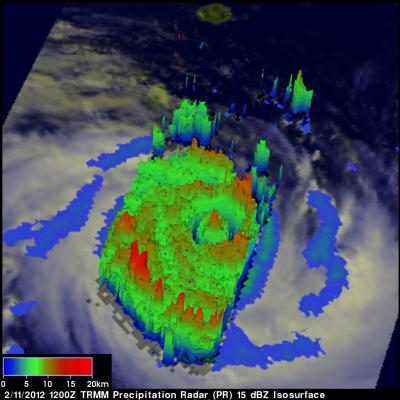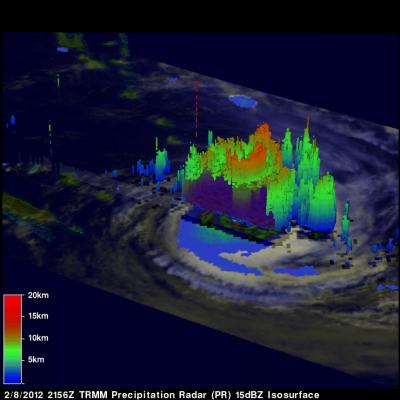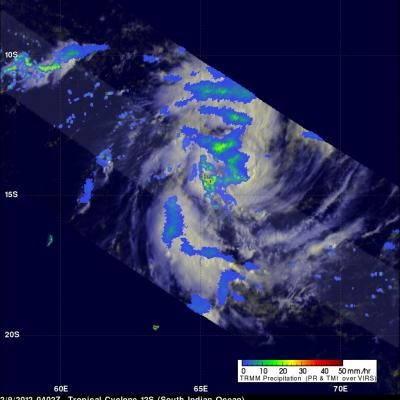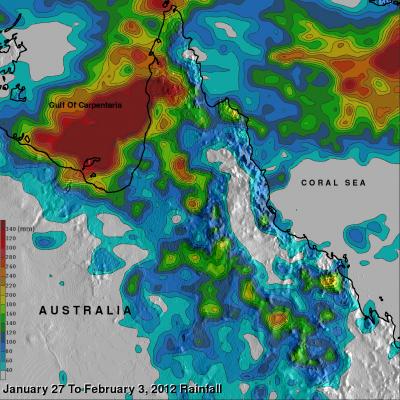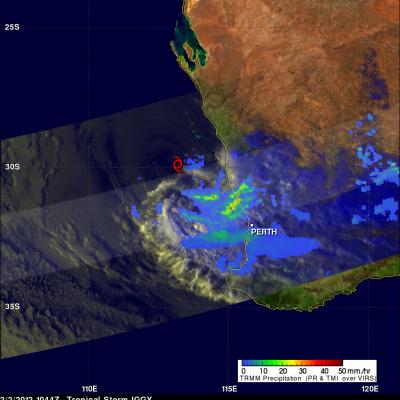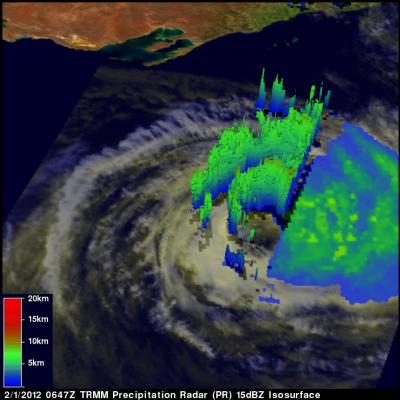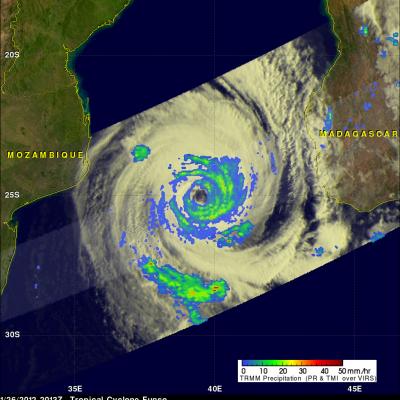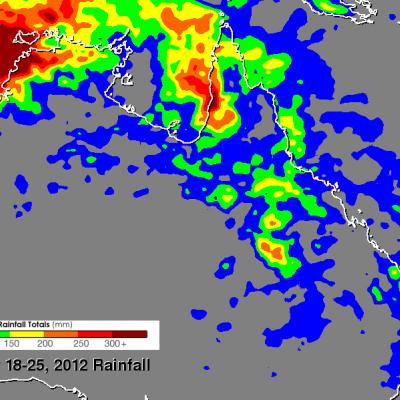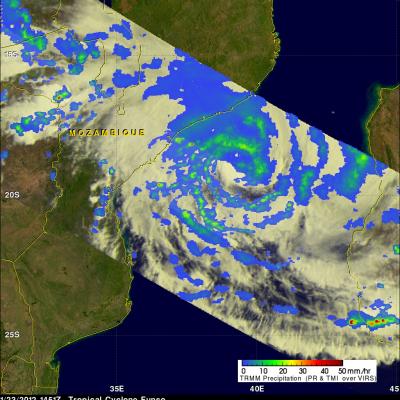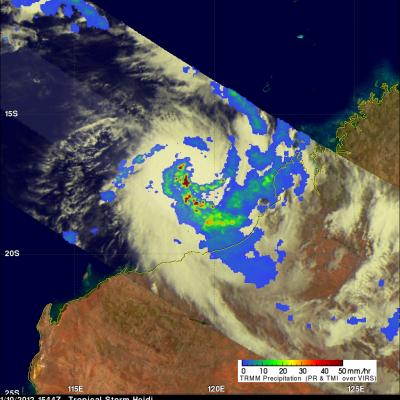Giovanna Shown Becoming Dangerous
Tropical cyclone Giovanna was located in the Indian Ocean east-northeast of Madagascar when it was classified as a tropical storm on 9 Febuary 2012. The TRMM satellite image above shows Giovanna when it was rapidly becoming more powerful on 11 February 2012 at 1200 UTC. Giovanna had intensified to a category 3 tropical cyclone on the Saffir-Simpson scale with wind speeds estimated at 100 kts (~115 mph). This TRMM pass shows that an eyewall replacement was occurring at that time. A small ring of strong convective storms was located around the center of the center eye and other powerful storms


